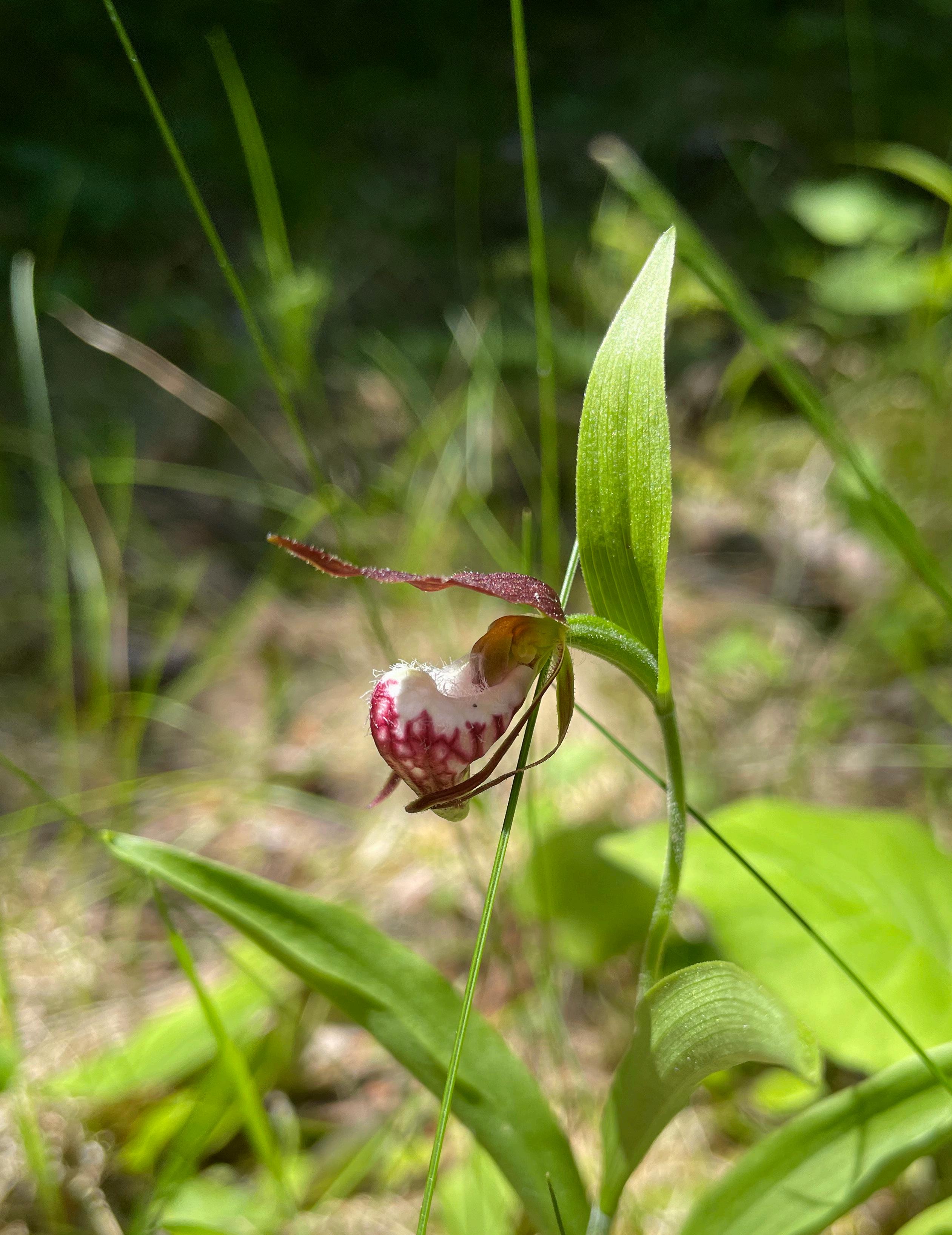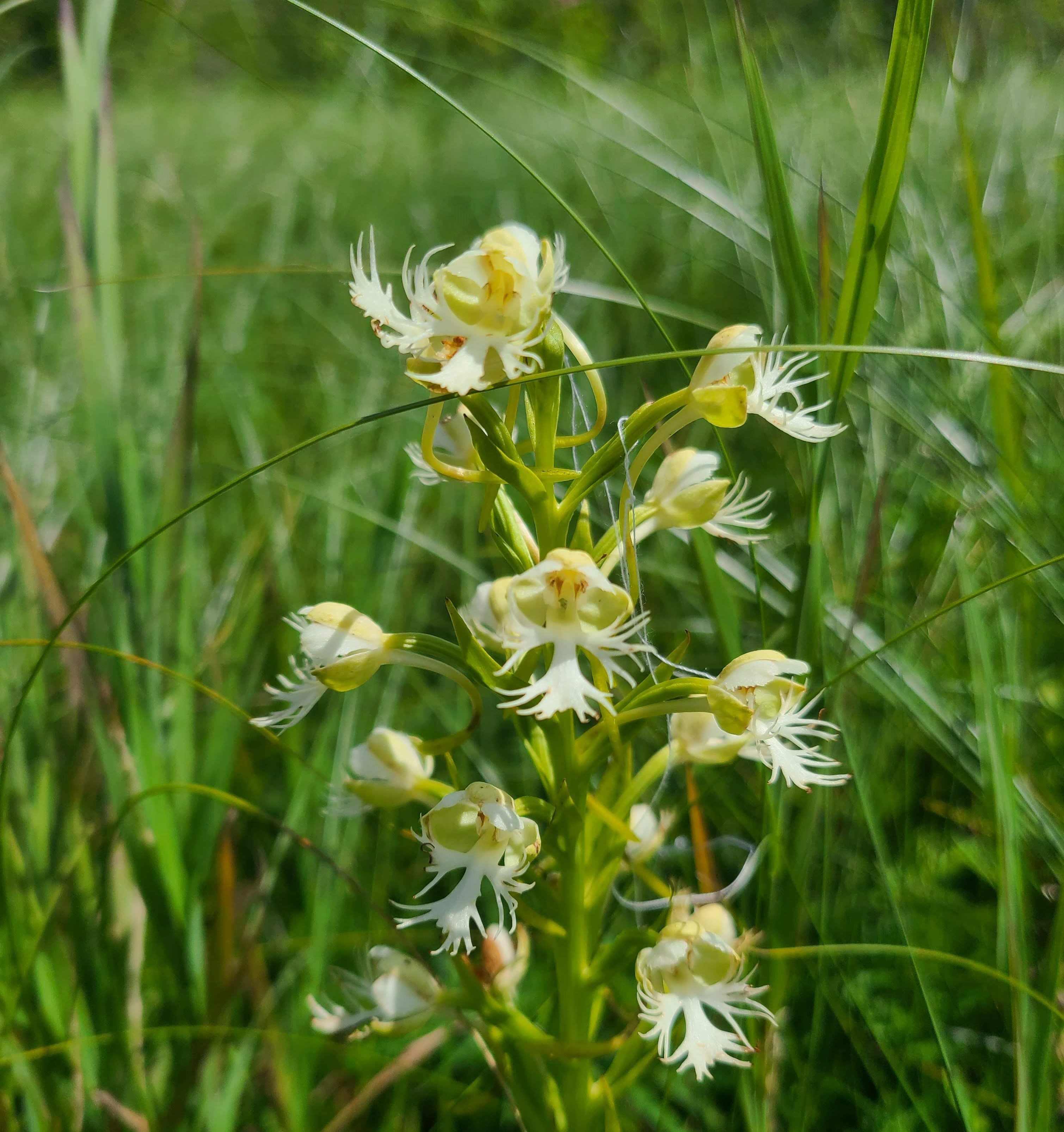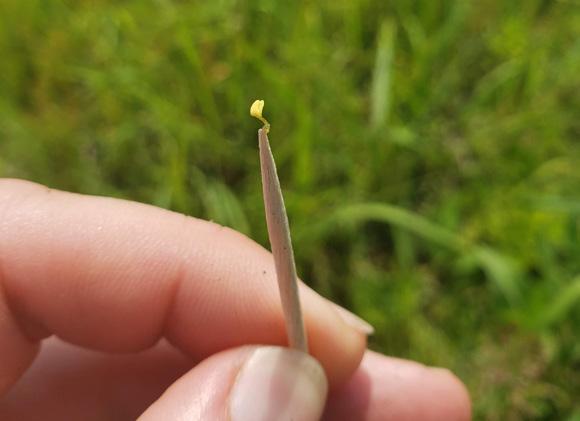
5 minute read
From Roots To Seed: Specialized Orchid Conservation Blossoms In Wisconsin
Katharine Caywood
Katharine Caywood is a communications and marketing specialist for the DNR’s Natural Heritage Conservation program.
In the world of plants, there’s one captivating flower unmatched in its beauty and variety: the orchid.

You might think of extraordinary mimicry, where the petals look like a female bee, or envision vibrant, pink flowers in bulbous shapes. Orchids also are sometimes considered delicate, but it’s a mistake to generalize them as stunning or simple, fragile or hearty. They are all these things.
Even the notion that all orchids have eye-popping flowers isn’t true. White adder’s mouth (Malaxis monophyllos), a Wisconsin special concern species, has up to 50 tiny (about 1-3 millimeters) greenish-white flowers on a central stalk.
Orchids are one of the largest plant families and grow in all 50 U.S. states. Wisconsin, with diverse though often isolated habitats, has 48 native orchid species, and at least one has been observed in every county.
In northern Wisconsin, showy orchids like the ram’s head lady’s slipper (Cypripedium arietinum), a state-threatened plant, can be found in wet alkaline bogs and dry sandy uplands. The eastern prairie fringed orchid (Platanthera leucophaea), a Wisconsin endangered and federally threatened species, is among the orchids found in remnant wet prairies with lots of sunlight as well as tamarack swamps.

But despite the impressive variety of orchids in the state, the news isn’t all good.
Threats And Decline
About 37% of Wisconsin’s orchids are rare, and about half are declining. Poachers or even well-meaning plant lovers can root up or trample plants and harm already small populations.
Another threat to orchids is habitat quality and availability. Having healthy soil with abundant fungal communities and few invasive plant species goes a long way to support orchids.
Pesticide-free, interconnected habitats also help. And many other plants and animals, like pollinators, benefit from these conditions, too.
Any decrease in these habitats can put orchids and others on shaky ground.
Conservation Action
While orchids are found in a broad range of shapes, colors and habitats, there’s one thing nearly all have in common: Their seeds are tiny.
Seeds from an open orchid pod almost look like sawdust. Unlike larger-seeded plants, the material to give the orchid seed its initial boost to germinate and grow isn’t there.
To get nutrients, orchids need help from mycorrhizal fungi. Mycorrhizae are a type of fungus made up of very fine threads that weave through healthy soil and attach to a plant’s roots, providing it with water and nutrients.
The DNR’s Natural Heritage Conservation program, in partnership with the Chicago Botanic Garden, is working to identify the unique fungal partners of orchids and to bank seeds from 10 rare orchids in the state.


The project is funded by a grant through Botanic Gardens Conservation International that supports work on rare plants located on U.S. Forest Service properties. This includes the Chequamegon-Nicolet National Forest in northern Wisconsin.
In summer 2024, staff from the DNR, the Chicago Botanic Garden and the U.S. Forest Service visited the forest to scout for orchids and collect a small sample of the seeds, roots and surrounding soil. The seeds, roots and attached mycorrhizae were sent to the Chicago Botanic Garden and cultured within a week of collection.
In the future, fungal cultures will be genetically sequenced, identified and tested for the ability to germinate the orchid they were collected from, then the seed will be banked.
“Preserving the seed provides a little bit of security from declines we are seeing in our wild populations,” said DNR botanist Kevin Doyle. “If these species disappear before we can bank them, then there is no chance at bringing them back or preserving those unique genotypes.”
Banking seed and mycorrhizae provides conservation options, Doyle added.
“Rare plant introductions, especially with species as finicky as orchids, often fail,” he said. “That’s why we first want to bank seed and identify mycorrhizae. It’s a slower approach but should ultimately be more effective.”
Helping Hand
In addition to a specific fungal partner, orchids also often have a specialized pollinator. Their unique floral shapes,
colors and irresistible scents have evolved to attract specific pollinator species. For the eastern prairie fringed orchid, for example, this is a nightflying hawk moth, also known as a sphinx moth.
But dependence on these extraordinary relationships also makes orchids vulnerable. If the habitat, climate or space isn’t right for the pollinator, the orchid will not produce seed and will eventually disappear.

This is especially true for orchids in isolated pockets of habitat, like the eastern prairie fringed orchid. But hand pollination is helping to prevent the disappearance of these rare flowers from Wisconsin.
During the flowering period, DNR staff use a toothpick to collect pollen, which is in a specialized club-like structure called a pollinium. Once they’ve gathered a flower’s tiny pollinium at one site, they will take it to a plant at a different site, deposit it on a new flower, collect more pollinia and return to the first site to cross-pollinate flowers there.
“We’re trying to imitate what the natural pollinator of eastern prairie fringed orchids would do,” said DNR botanist Jessica Ross.
“This orchid can take up to five years to go from a seed to a flowering plant, so it will take a while to see progress, but so far we’re seeing larger seed pods in hand-pollinated flowers, and that’s a good sign.”
Get Involved
Conservation work offers hope for orchids in Wisconsin, and there are ways you can help.
Volunteer with the Wisconsin Rare Plant Monitoring Program
Support the Endangered Resources Fund, including with the purchase of a special license plate

